7 Greek Temples from Antiquity You Should Visit
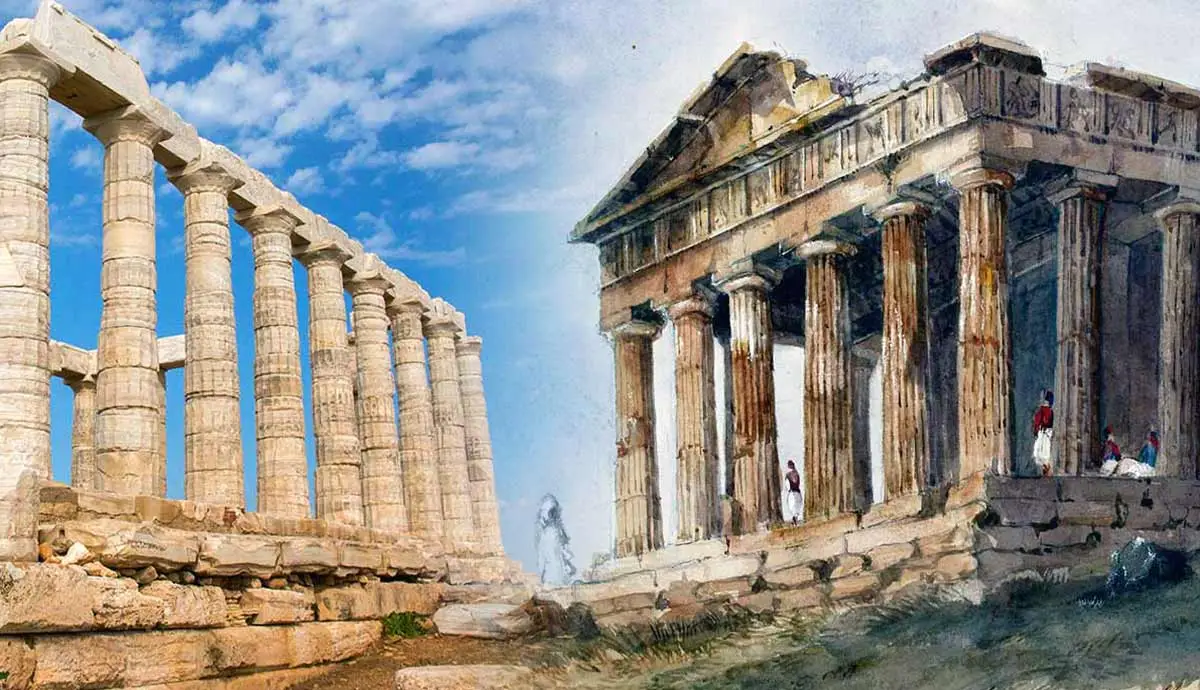
You might be familiar with the iconic Parthenon, but how well do you know the other important temples of ancient Greece?
Greek temples continue to influence Western architecture and remind us of the ideals of ancient Greece. The temples were places of worship and destinations of pilgrimage. However, they also functioned as treasuries and gathered people for festivals, games, and politics, even healthcare. Here is a list of seven key ancient Greek temples, including one that is considered a wonder of the ancient world.
1. Parthenon – The Iconic Landmark
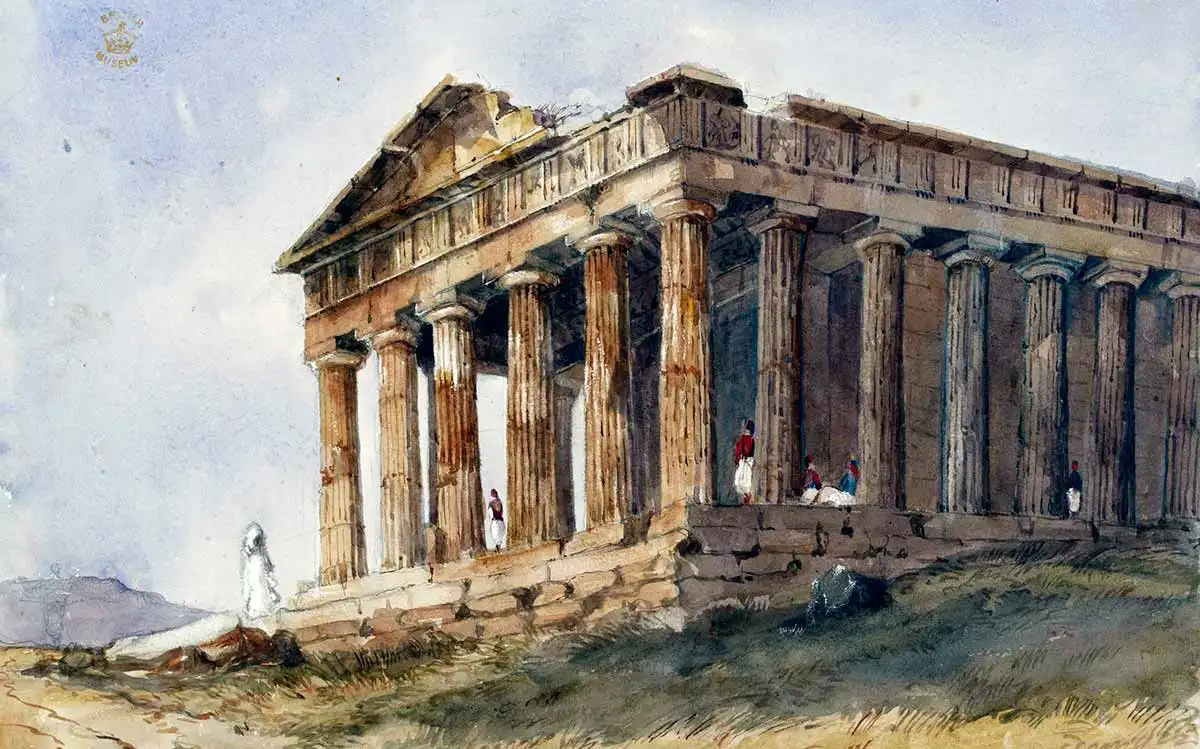
Parthenon, by Lady Pauline Trevelyan who traveled in Greece in 1842, via British Museum
The temple of Parthenon, standing majestically on top of the Acropolis hill in Athens, is the iconic landmark of the city. No visit to Athens would be complete without climbing the Acropolis to visit the temple. Besides being a busy tourist destination, Parthenon is an exceptional example of ancient Greek architecture and a symbol of classical civilization. It was built between 447 and 438 BCE, with decorations finished about six years after. The Parthenon is dedicated to the goddess Athena, the patron goddess of Athens, and was built on the site of an earlier temple.
The Parthenon is constructed in the Doric order, using Pentelic marble. The key elements of the Doric order include columns with no base, a plain top part, and a frieze and metopes around the top sides. The temple oozes symmetry and harmony but in fact, it is full of optical illusions, which make the temple appear even bigger than it is. The columns lean slightly inwards and are narrower on the top than the bottom. All horizontal lines have a slightly upward curve so that the building would appear symmetrical to the person standing close to the temple, looking up. The temple was extensively decorated with sculptures depicting mythological scenes. The Parthenon frieze encircled the outer walls, showing what was likely a procession during the Panathenaea festival.
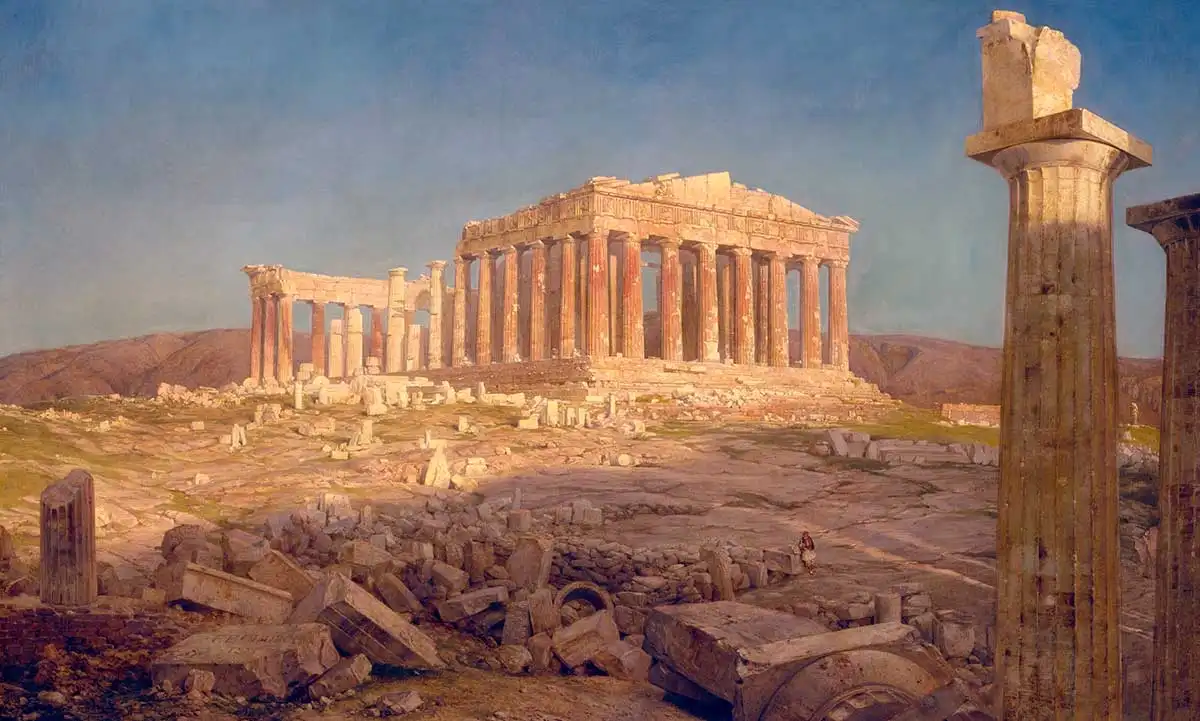
Parthenon, by Fredric Edwin Church, 1871, via MET Museum
Over the centuries, the Parthenon has undergone significant changes and, together with the city, suffered damage during wars. It was transformed into a Christian church in the 5th century and an Islamic mosque in 1456 after the invasion by the Ottoman Turks. During the Venetian siege of Athens in 1656, the temple was severely damaged by a cannonball, which hit the gunpowder-filled temple. The restorations of the Parthenon are still ongoing.
2. Temple of Apollo in Delphi – Home of the Oracle
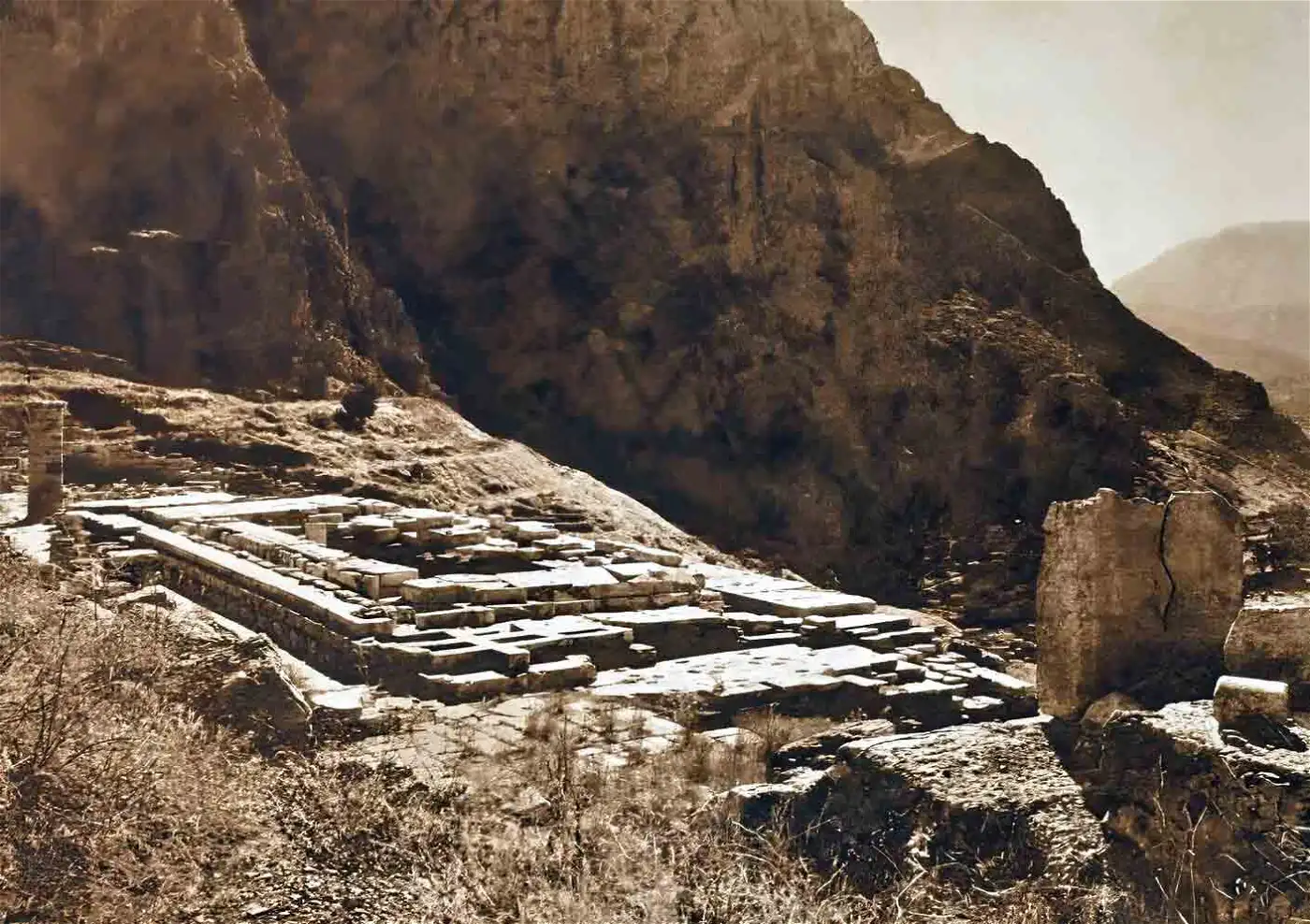
Photolithograph of the Temple of Apollo by Frédéric Boissonnas, 1910 via J. Paul Getty Museum, Los Angeles
The Temple of Apollo in Delphi was considered the navel of the world in ancient times. Despite this, the temple is quite remote even today. It stands on the slopes of Mount Parnassus in central Greece. The temple site was where the famous oracle granted numerous pilgrims prophesies on personal and political matters. The prophecies were given through a priestess known as the Pythia. The temple treasuries housed several notable artifacts and dedicatory gifts. Several city-states kept their own treasuries on the temple grounds. The Temple of Apollo grew wealthy and highly influential through these donations and dedications from the Greek city-states.
The exact date of the first temple’s construction is unknown, but there were several earlier temples before the final construction in 510 BCE. The temple was built in Doric style and had six columns on the façade and fifteen on the sides. The temple was as impressive in size and grandeur as the most prominent ancient Greek temples.
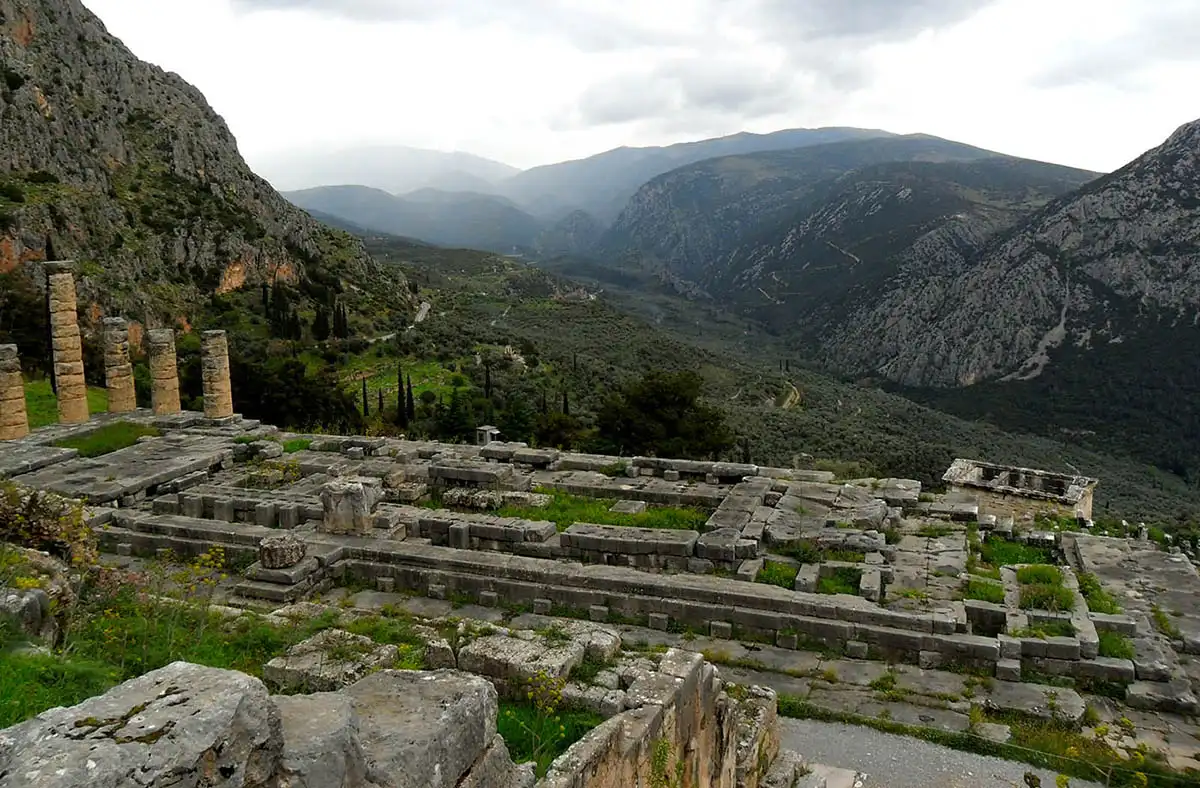
Temple of Apollo, Delphi, by Laura Hayward/TheCollector
The decline of the temple was sealed when Christianity began to spread within the Roman Empire. Old religions were banned as paganism first in 390 CE and finally in 435. The temple area was abandoned and eventually destroyed by earthquakes. After excavations, which started in 1892, the Temple of Apollo has become once again one of the destinations in Greece that draws the masses. Today, it is one of the most visited archaeological sites in Greece, and thousands of tourist flock to Delphi each year to enjoy the mystical aura that envelopes this once-sacred place.
3. Temple of Zeus in Olympia – One of the Seven Wonders of the World
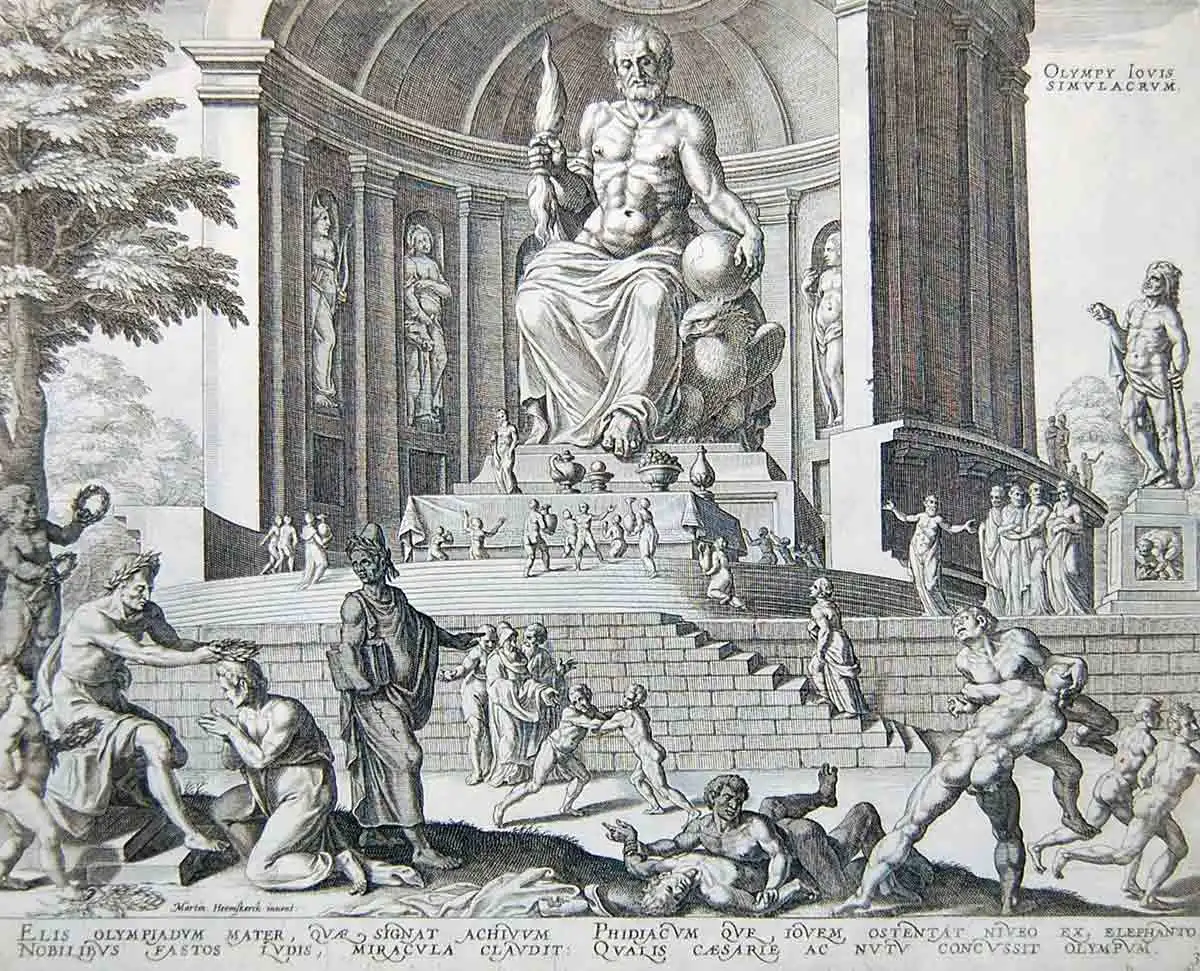
The statue of Zeus at his temple in Olympia, print after an engraving by Phillips Galle, 1572, via British Museum
The Temple of Zeus in Olympia was colossal, matching the power of the king of gods to whom it was dedicated. The temple housed a massive 12-13 meter, or 39-foot tall, statue of Zeus, sculpted in ivory and gold with a technique known as chryselephantine. The impressive statue depicted the god Zeus seated, holding a scepter in one hand and a statue of Nike, the goddess of victory, in the other. It took the sculptor Phidias about ten years to finish the statue, and it was listed as one of the seven wonders of the ancient world.
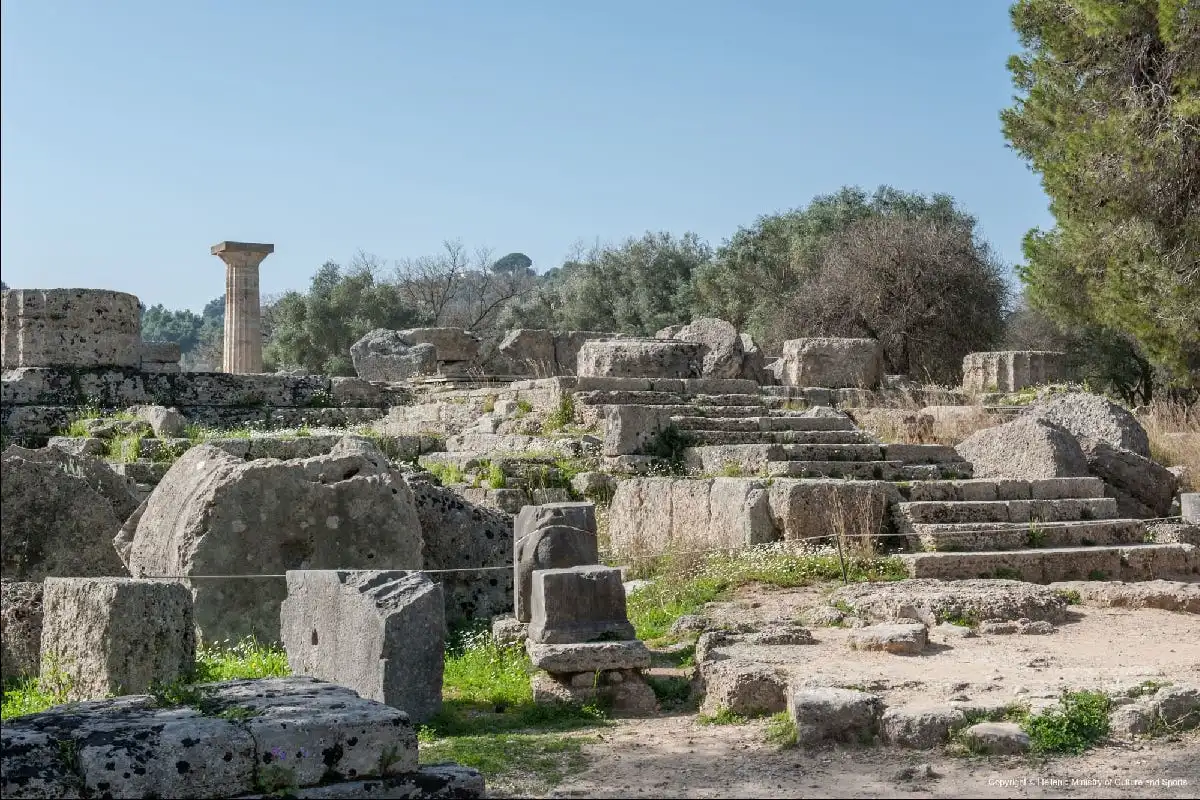
The temple of Zeus at ancient Olympia, via Hellenic Ministry of Culture
The temple of Zeus was constructed between 466 and 456 BC on top of an earlier temple. The statue was created by the renowned sculptor Phidias. The temple’s exterior was adorned with sculptures depicting mythological scenes, legendary battles, and heroic characters. The temple was constructed in the Doric order. It had six columns on the façade and 13 on the sides. Pausanias writes that the temple’s size was impressive, over 20 meters tall.
Fire destroyed the temple in the 5th century CE, and subsequent earthquakes completed the destruction. What happened to the impressive statue of Zeus remains unknown. Today, only fragments of the temple remain.
4. Temple of Poseidon in Sounion – Gateway to Athens
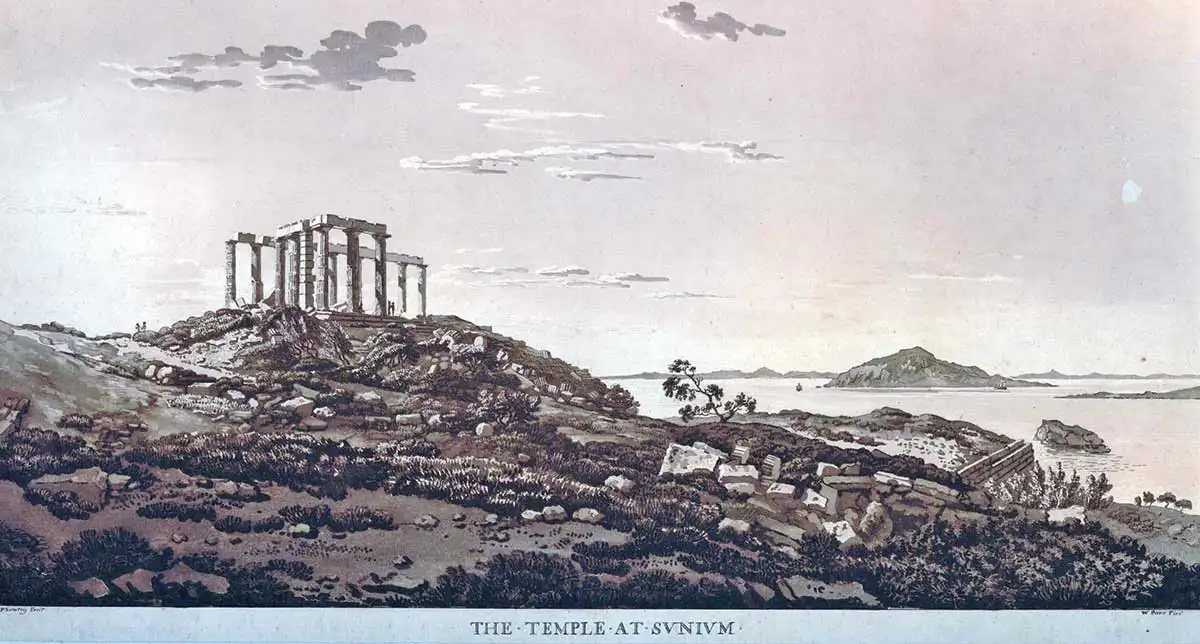
Temple at Sounium, print after an etching by William Pars, 1780, via British Museum
The Temple of Poseidon stands on a cliff overlooking the Aegean Sea. The temple was dedicated to the god of the sea, Poseidon. It served as a beacon for seafarers and played a vital role in ancient maritime navigation. The temple was built in the Golden Age of Athens when Pericles ordered several significant public buildings to be constructed.
Architecturally, the temple is an excellent example of the Doric order. Its design features six columns on the façade and thirteen on the sides. The marble used in the construction was mined locally. The Temple of Poseidon is an interesting example of the multifaceted role of temples in ancient Greek culture. The temples were places of worship, but they could also act as treasuries and fortresses. The temple of Poseidon was also a lighthouse and a watchtower, controlling the entry into Athens through the sea. For centuries, the temple suffered damage from wars, including pirate attacks and earthquakes. Restoration efforts have preserved and reconstructed parts of the temple.
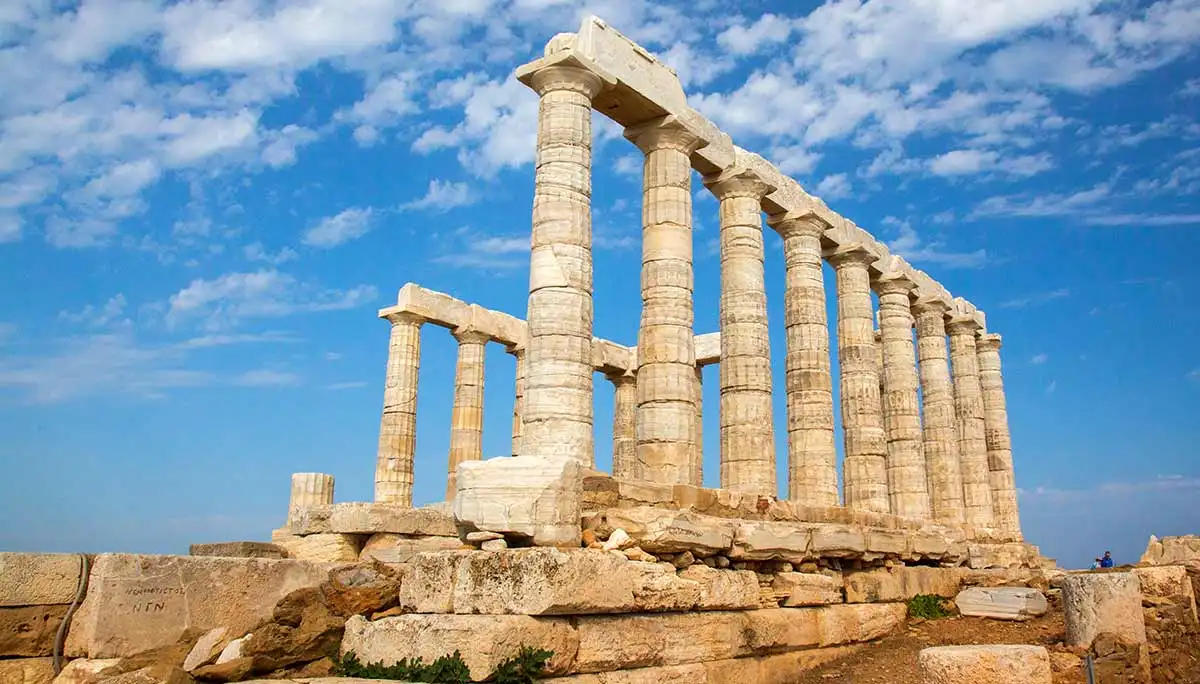
Photo by David Merrick, via Unsplash
The inscription on one of its columns makes the Temple of Poseidon particularly fascinating. The famous English poet, Lord Byron, carved his name on one of the columns during his Grand Tour around Europe. He also wrote a poem about his experience in Sounion. Today tourists flock to the temple by busloads to enjoy the stunning coastal view and the mesmerizing sunsets.
5. The Temple of Hephaestus in Athens – Preserved over Centuries
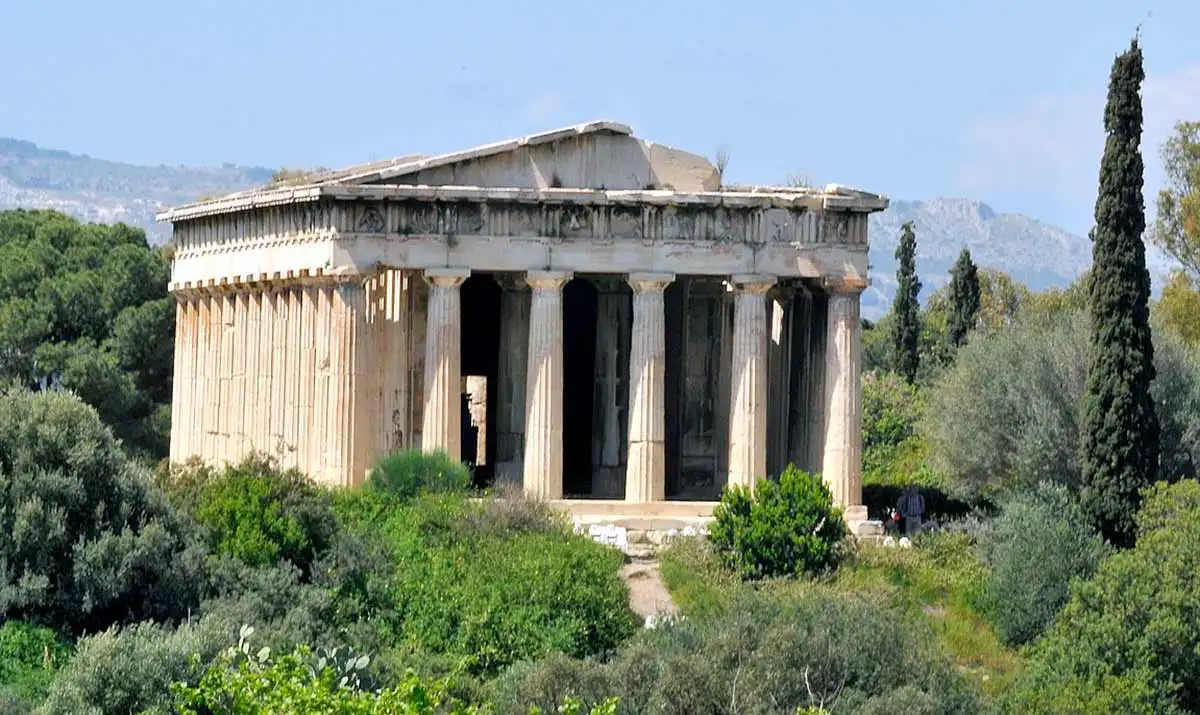
The Temple of Hephaestus, via Wikimedia Commons
The Temple of Hephaestus in the agora of Athens is one of the best-preserved ancient Greek temples. It was built to honor the god of fire and craftsmanship, Hephaestus. The Temple of Hephaestus is also known as the Hephaesteion or Theseion. Constructed on the site of a much smaller sanctuary in 449 BCE, it gives modern visitors a chance to step into the architectural splendor of ancient Athens.
Unlike many other ancient Greek temples, the Hephaesteion survived relatively intact over the centuries. It even still has its roof. The preservation is mainly due to the temple being converted into a Greek Orthodox Church around 700 CE. The church was in very little use and closed in 1834. Architecturally, the Temple of Hephaestus follows the Doric order. The temple is peripteral, and a colonnade on all sides surrounds it. Exquisite marble friezes and metopes depict scenes from Greek mythology, such as the birth of Athena and Hephaestus’s return to Mount Olympus.
The Temple of Hephaestus was situated in the Agora, the heart of ancient Athens’ civic and commercial life. Like other temples, the Temple of Hephaestus had various purposes. It was a place of worship but also functioned as a treasury, meeting hall, and at times even a workshop for metalworking. Today, visitors can explore the Temple of Hephaestus and marvel at its well-preserved columns, intricate reliefs, and impressive architectural design. It provides us with a concrete connection to the rich cultural heritage of Athens.
6. The Temple of Artemis in Ephesus – Lost in History

Imaginary depiction of the Temple of Artemis as a three-storey building visited by a king, print after an engraving by Maarten de Vos, 1660, via the British Museum
The Temple of Artemis was located in Ephesus, in modern-day Turkey’s Izmir province. Not much has survived of the temple; only one single column is still standing. The temple was once dedicated to the goddess Artemis and was a location of the unique Artemisia festival which included a grand procession. The original temple was built in the 6th century BCE but was destroyed and rebuilt multiple times over the centuries for various reasons, including arson, war, and natural disasters. Each reconstruction aimed to outdo the previous one in terms of size. In its time, the temple was listed as one of the seven wonders of the ancient world.
Its colossal size and intricate ornamentation characterized the temple’s architecture. It featured Ionic columns, reaching a height of about 18 meters or 60 feet, with elaborate capitals adorned with sculpted reliefs of mythical creatures and gods. The temple was surrounded by a vast courtyard and contained numerous statues and treasures dedicated to Artemis.
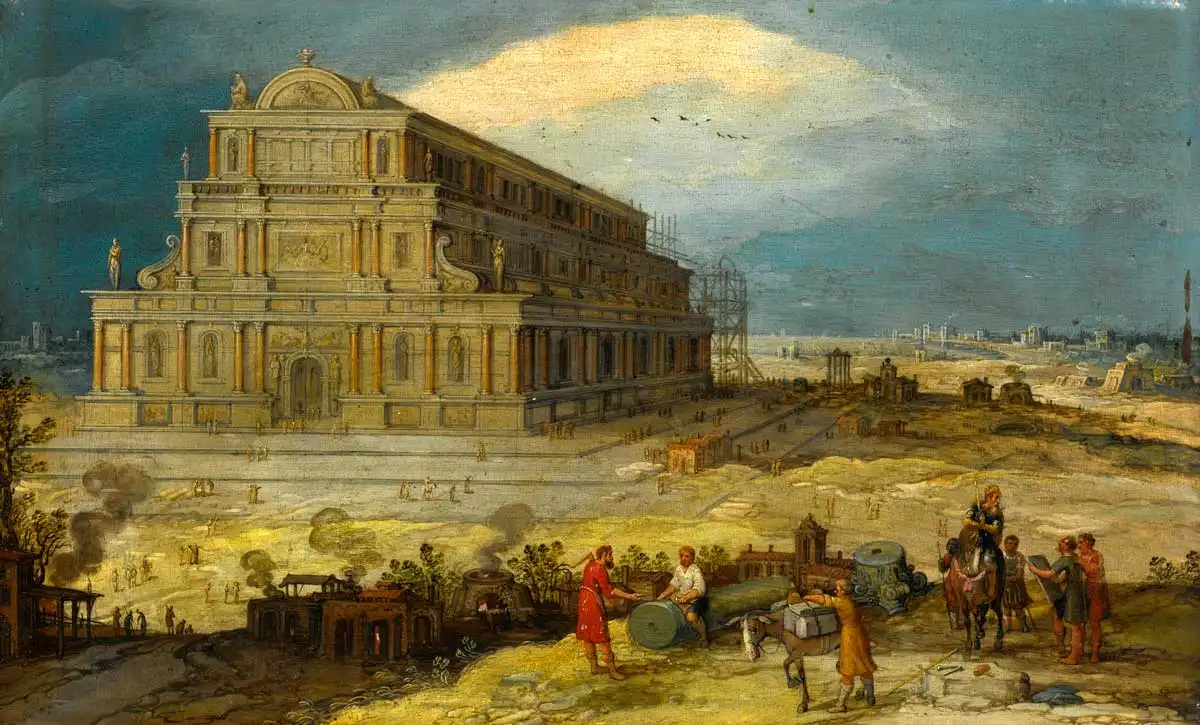
The Building of the Temple of Artemis at Ephesus, Hendrick van Cleve III, 16th century, via Wikimedia Commons
The Temple of Artemis was a famous place for worship and as a venue for various festivals, celebrations, and other gatherings. Pilgrims from all over the Greek world made the long journey to reach the temple, donating votive offerings and seeking the blessings of Artemis. Ephesus was an important city in Roman times, but an invasion by the Goths destroyed the Temple in 267 CE. The Temple of Artemis met its final demise in the 5th century CE.
7. The Temple of Hera in Paestum – A Heritage site
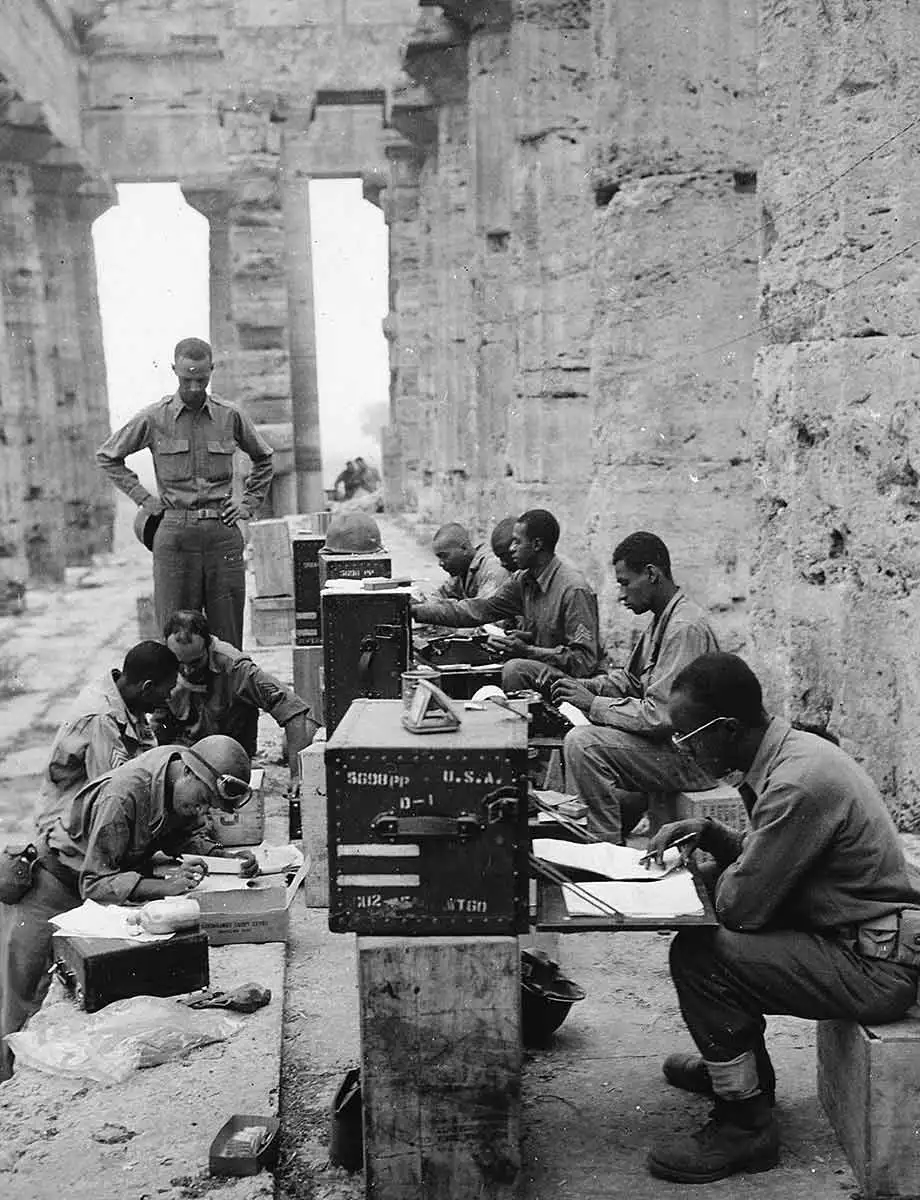
A photograph of Allied soldiers after the invasion of Italy in 1943, when the temple was used as a temporary office, via Wikimedia Commons
The Temple of Hera in Paestum was built in 460-450 BCE in Magna Grecia, modern-day Italy, Campania region. Actually, Paestum had several temples and even two temples dedicated to Hera. The later temple is known as the Temple of Hera II, and it is one of the best-preserved examples of ancient Greek architecture in Italy. Paestum was a significant center for worshiping Hera, the wife of Zeus, but also Zeus was honored there. The Temple of Hera II was built closely following the architecture of the Temple of Zeus in Olympia.
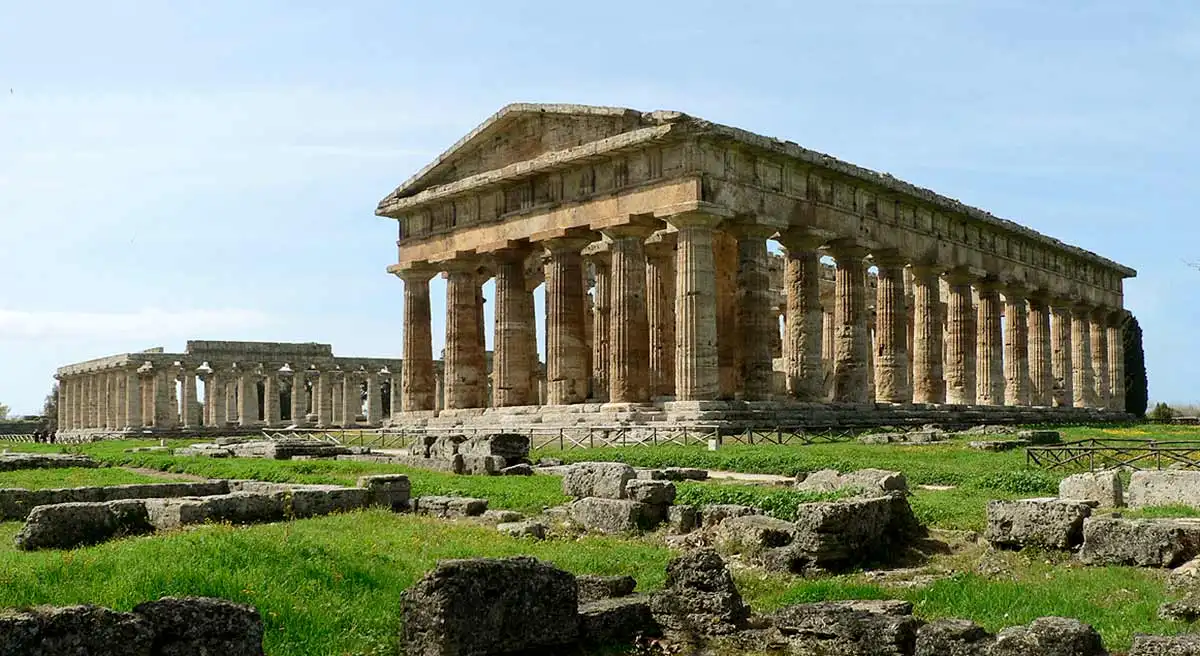
The two temples of Hera at Paestum, via Wikimedia Commons
The Temple of Hera is a unique blend of architectural styles. While it follows the Doric order typical of ancient Greek temples, it also exhibits some elements of the earlier, Archaic style, which was prevalent in Greece during the 6th century BCE. This combination of styles provides valuable insights into the evolution of ancient Greek architecture. The temple’s impressive size and proportions are notable. It boasts a peripteral design with six columns on the façade and fourteen on the sides. Its sheer scale, combined with its excellent state of preservation, is amazing.